
Map and Personalize Your SaaS Customer Journey: 2024 Guide

by
Wiktoria Slowikowska
Oct 3, 2024
Identify and convert your most valuable users
Sign Up
Understanding and optimizing the customer journey can be the difference between rapid growth and high churn rates. Modern users expect more than just software; they want personalized experiences that cater to their specific needs and help them achieve value quickly.
Mapping out a SaaS customer journey helps businesses better understand how users interact with their product and identify opportunities to enhance the experience at every stage, ultimately driving adoption, retention, and expansion.
In this guide, we'll dive deep into the world of SaaS customer journey personalization. We'll explore:
The unique stages of the SaaS customer journey
Why personalization is crucial for SaaS success
Practical strategies for personalizing each stage of the journey
Four key steps to implement a robust personalization strategy
Whether you're a SaaS startup founder or a marketing professional, this blog will provide you with actionable insights to transform your customer experience.
By the end of this article, you'll have a clear roadmap for creating personalized touchpoints that reduce time-to-value, increase user engagement, and ultimately boost your bottom line.
What is the SaaS Customer Journey?
The SaaS customer journey refers to the process users go through when engaging with your product, from their initial discovery to becoming power users and advocates. This journey often involves freemium models, trial periods, and self-service onboarding, making personalization crucial for guiding users towards activation and long-term engagement.
Why Personalization is Key in SaaS
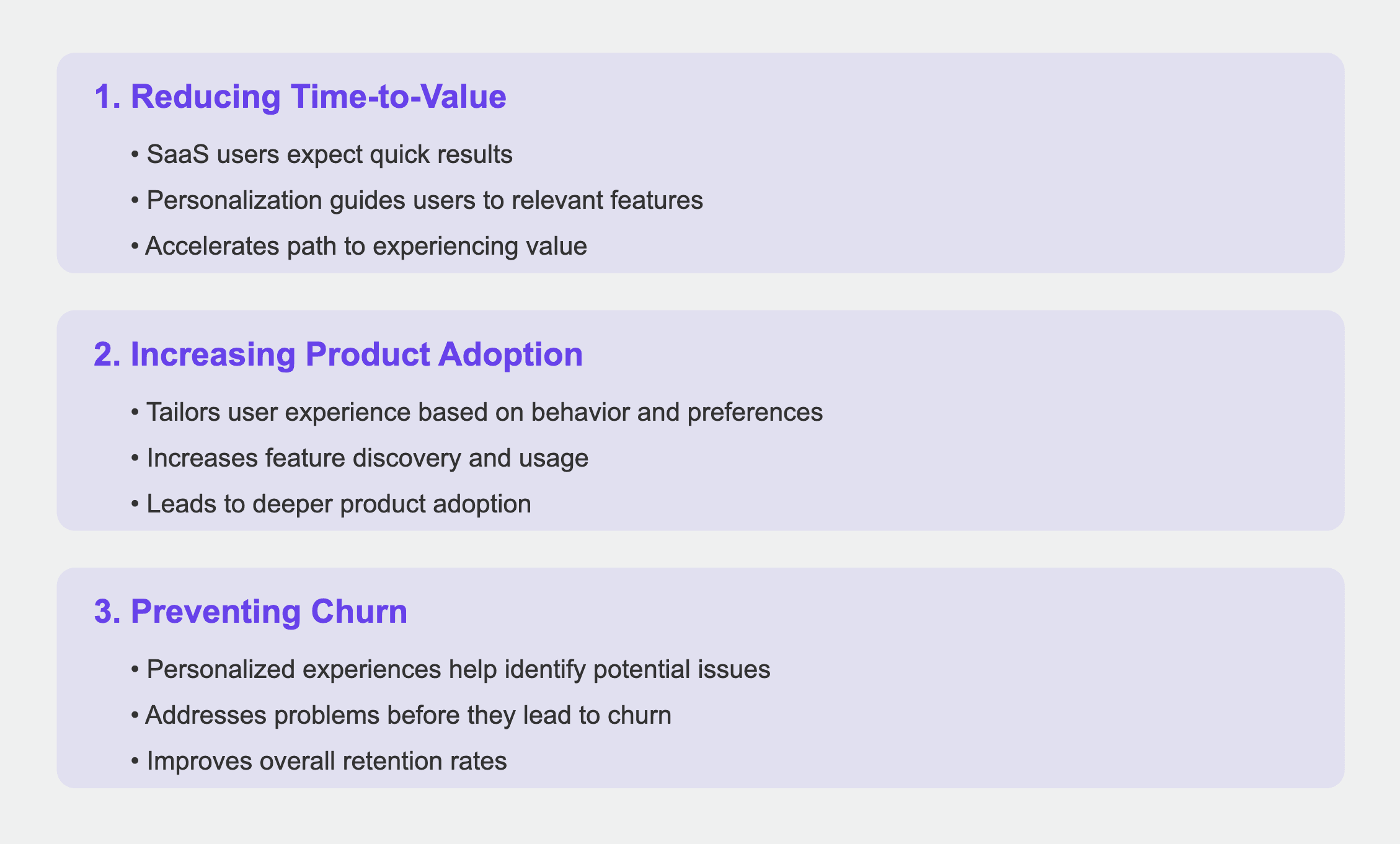
Personalization in SaaS goes beyond simply adding a user's name to an email. It's about delivering the right features, guidance, and support at the right time, based on where each user is in their journey. Here are three key reasons personalization matters in SaaS:
Reducing Time-to-Value: SaaS users expect quick results. Personalization helps guide them to the features most relevant to their needs, accelerating their path to experiencing value.
Increasing Product Adoption: By tailoring the user experience based on behavior and preferences, you can increase feature discovery and usage, leading to deeper product adoption.
Preventing Churn: Personalized experiences help identify and address potential issues before they lead to churn, improving overall retention rates.
Mapping and Personalizing the SaaS Customer Journey
Let's look at the typical stages in a SaaS customer journey and how personalization can enhance each one:
1. Awareness
This is where potential users first discover your SaaS solution, often through content marketing, SEO, or product-led growth strategies.
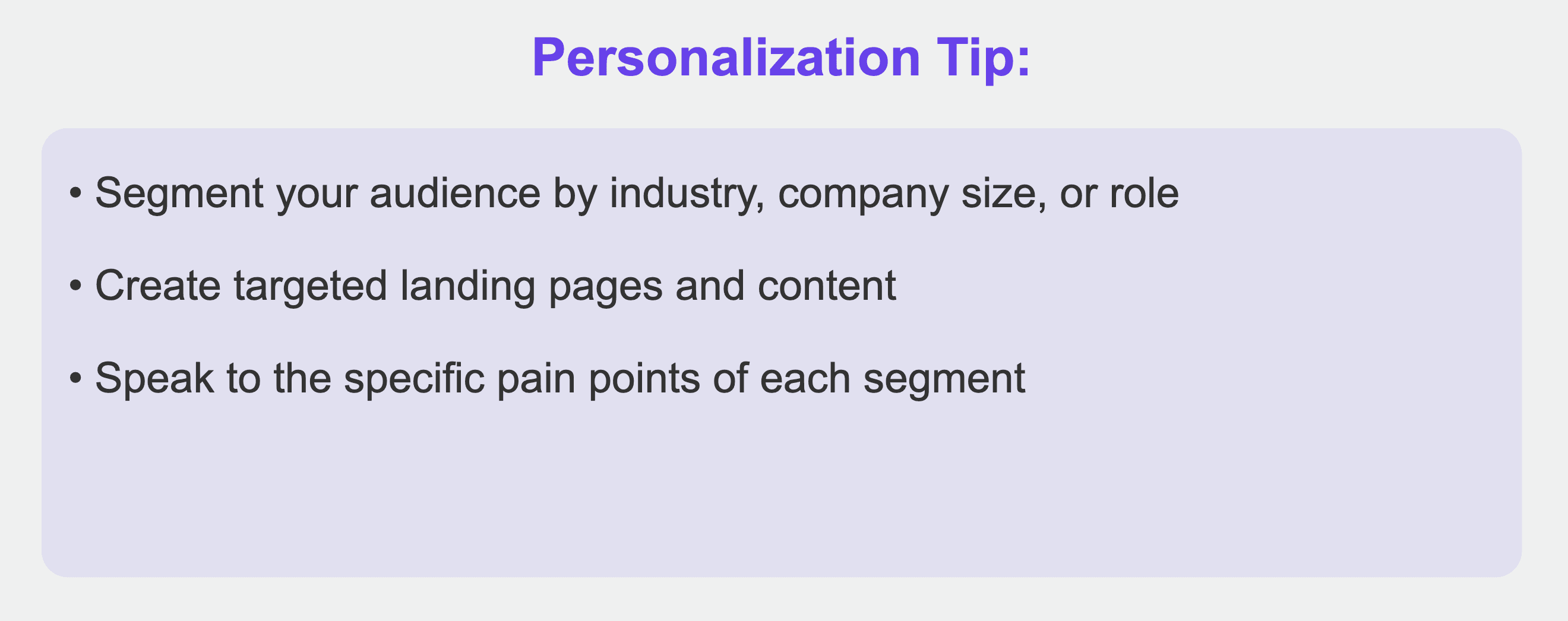
2. Consideration & Trial
At this stage, users are evaluating your product, often through a free trial or freemium model.
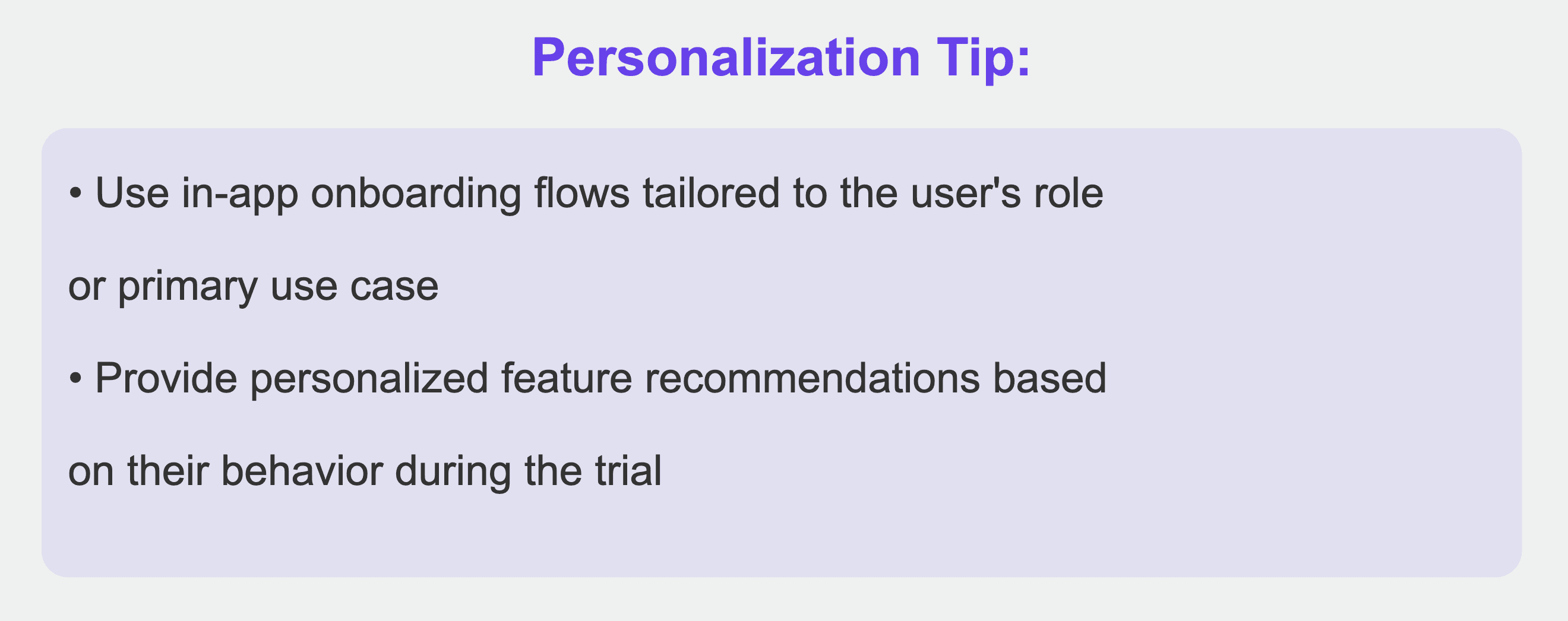
3. Activation
This crucial stage is where users experience their first "aha" moment and start to see the value in your product.
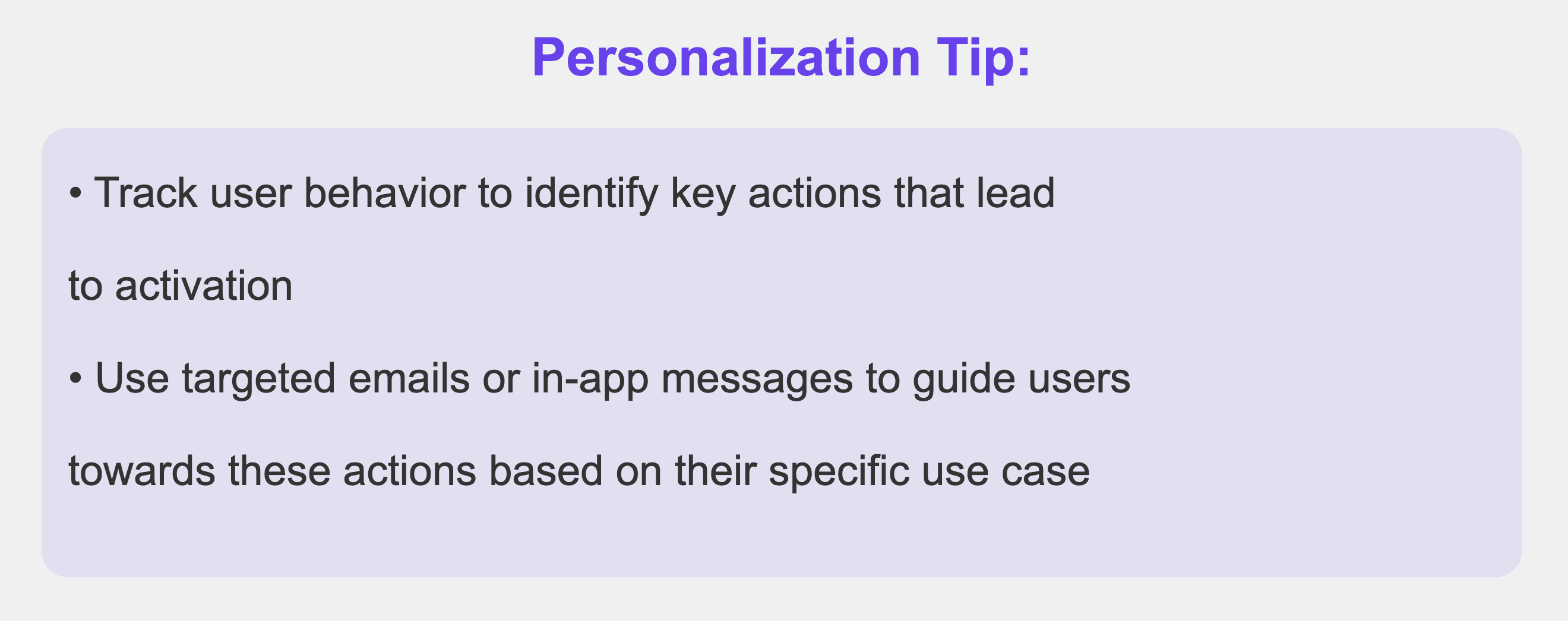
4. Adoption & Engagement
After activation, focus on driving deeper product usage and helping users incorporate your solution into their daily workflows.

5. Expansion
In SaaS, expansion often comes through upgrading to higher-tier plans or increasing user seats.
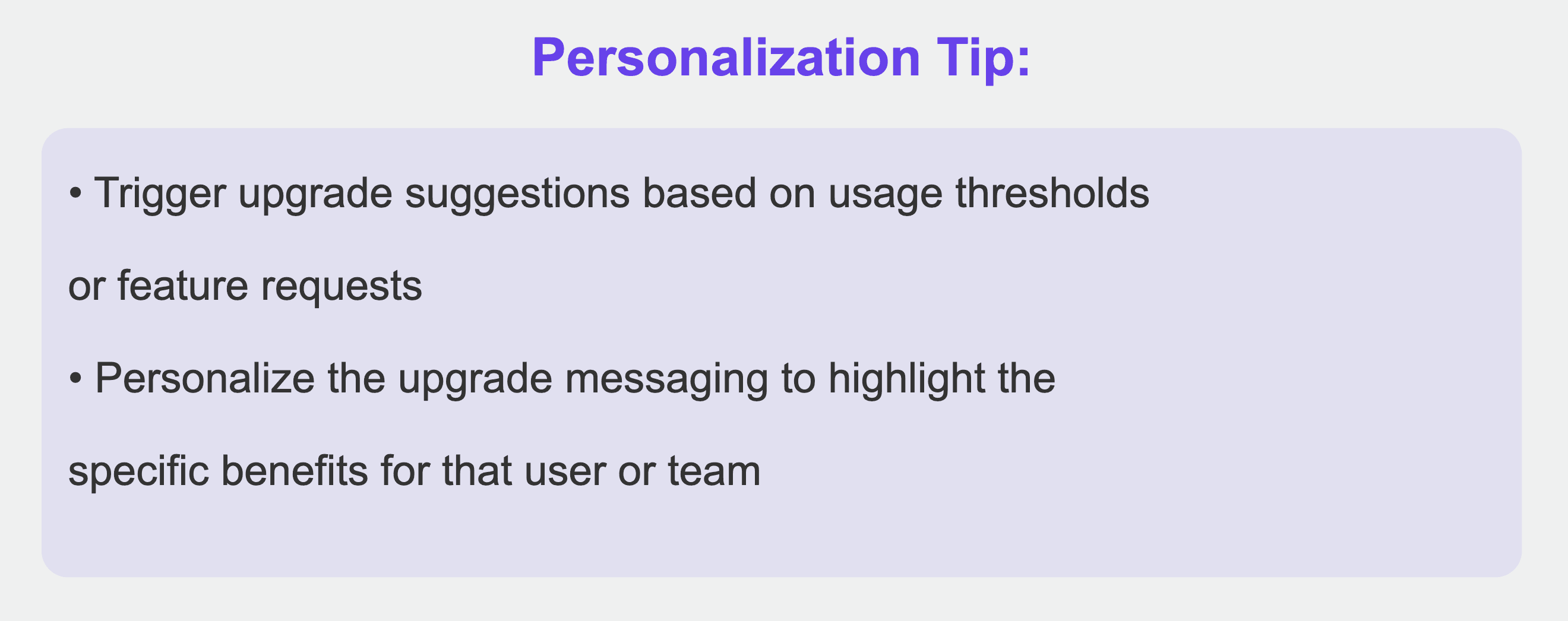
6. Renewal
For SaaS businesses, particularly those with annual contracts, the renewal phase is critical for maintaining and growing recurring revenue.
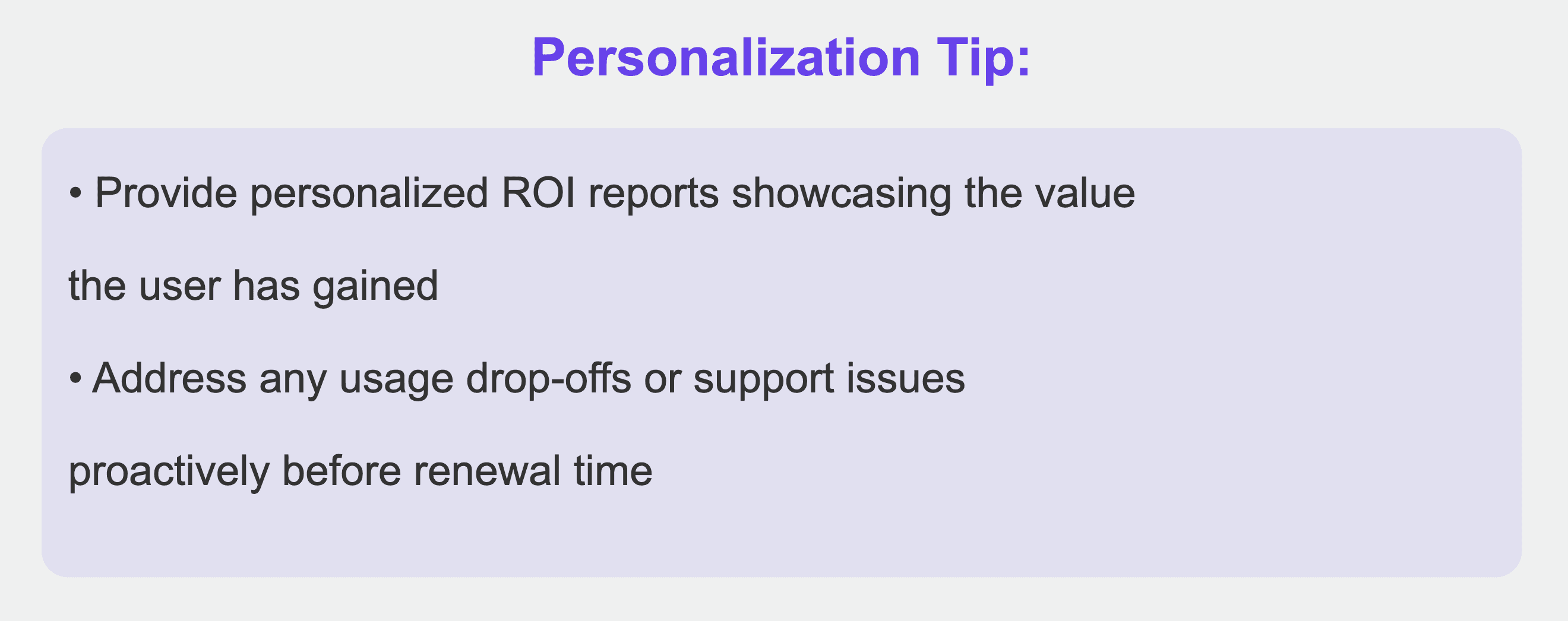
7. Advocacy
Turning satisfied users into advocates can significantly reduce customer acquisition costs and drive organic growth.
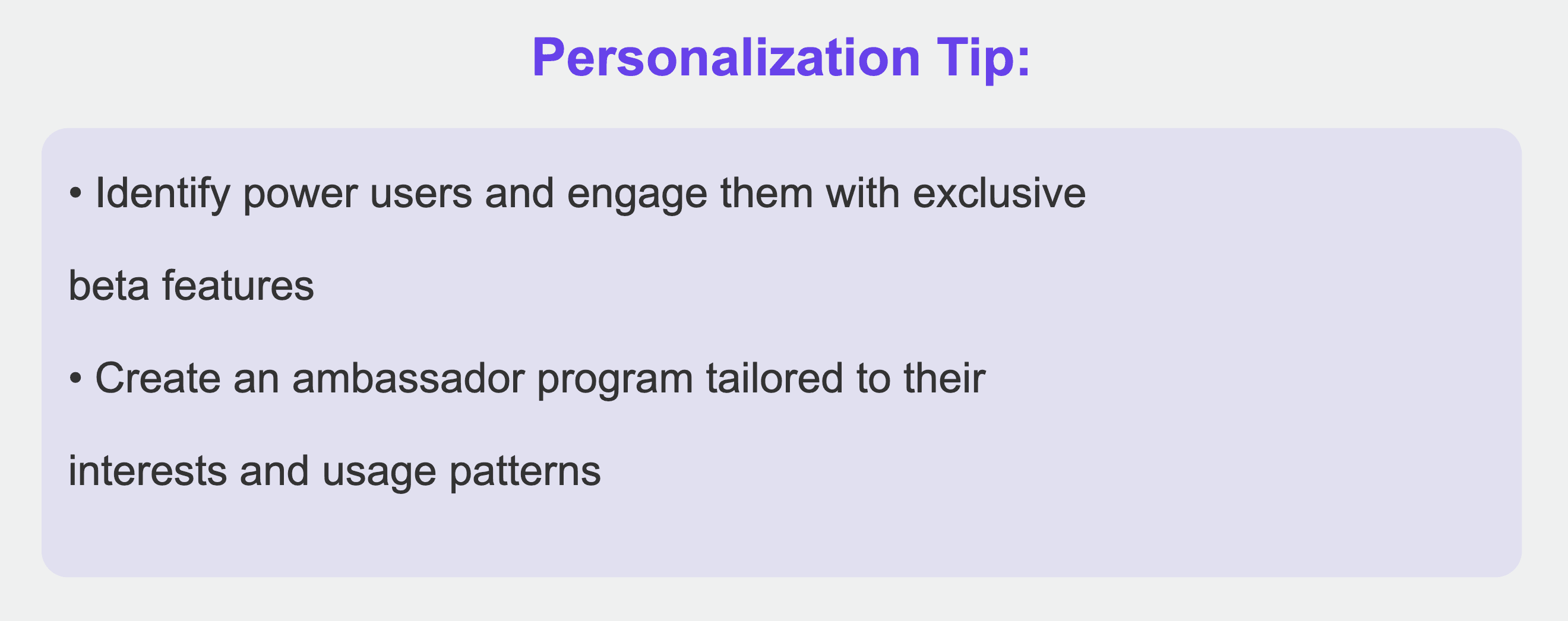
4 Steps to Personalize Your SaaS Customer Journey
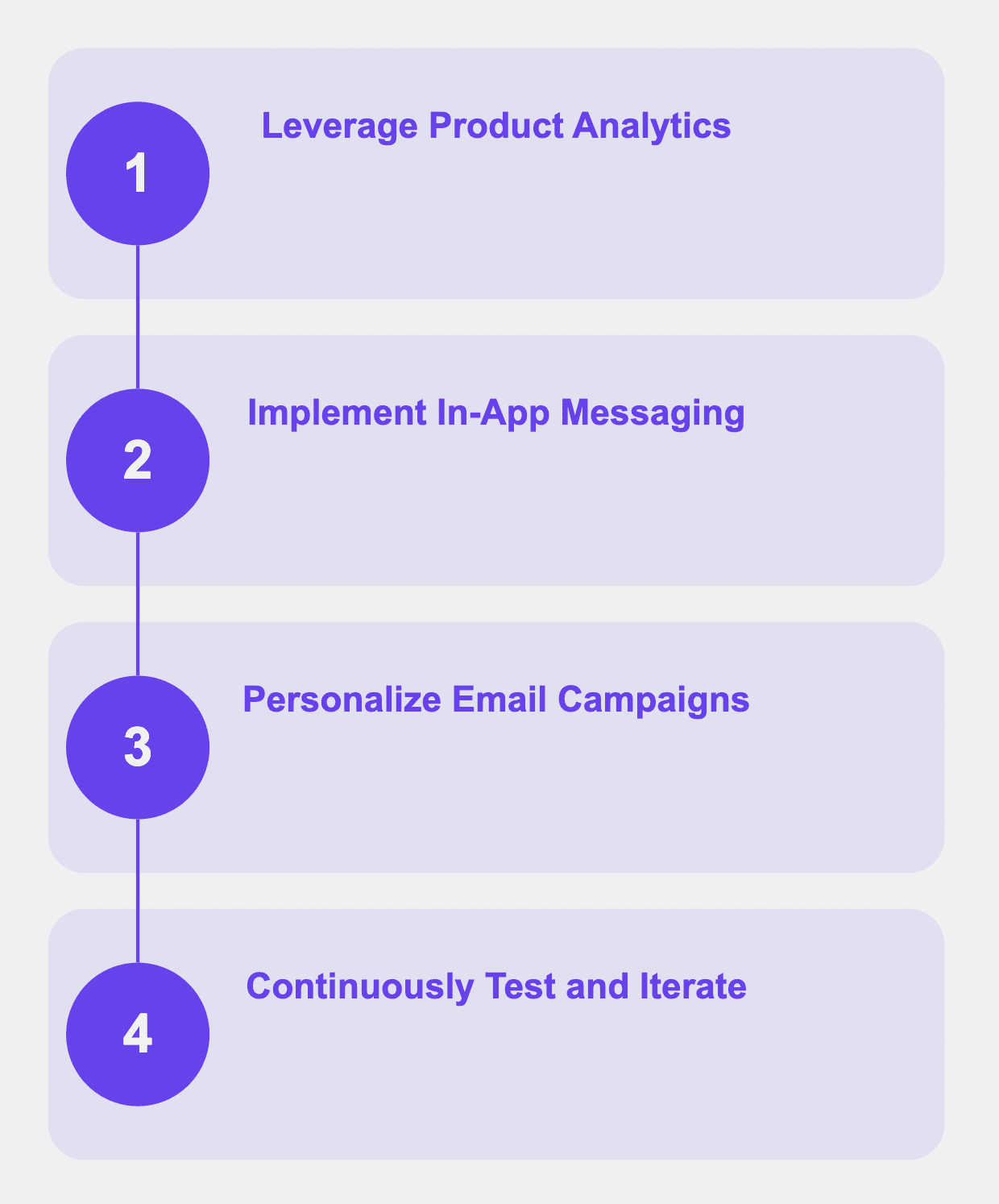
Now, let's dive deeper into the four key steps to effectively personalize your SaaS customer journey:
1. Leverage Product Analytics
Product analytics are the foundation of effective personalization in SaaS. By tracking and analyzing user behavior within your product, you can gain invaluable insights that inform your personalization strategies.
Choose the right tools: Implement robust analytics platforms like Mixpanel, Amplitude, or Heap. These tools allow you to track user actions, create cohorts, and analyze user flows.
Define key metrics: Identify the metrics that matter most for your product. This might include feature adoption rates, time-to-value, or specific actions that correlate with long-term retention.
Set up event tracking: Ensure you're tracking all relevant user actions within your product. This data will power your personalization efforts.
Create user segments: Use your analytics data to create meaningful user segments based on behavior, engagement level, or customer characteristics.
Analyze user journeys: Look for patterns in how different user segments navigate your product. This can inform where and how to implement personalization.
2. Implement In-App Messaging
In-app messaging is a powerful way to deliver personalized experiences directly within your product, guiding users towards value and deeper engagement.
Choose an in-app messaging tool: Platforms like Hyperaktiv, Pendo, or Appcues integrate with your product to deliver targeted messages.
Design a messaging strategy: Plan out different types of messages (tooltips, modals, banners) for various stages of the user journey.
Personalize message content: Use data from your analytics to tailor message content to each user's specific context or needs.
Set up triggering rules: Define rules for when messages should appear based on user actions, attributes, or time-based conditions.
A/B test your messages: Continuously test and refine your in-app messaging to improve its effectiveness.
3. Personalize Email Campaigns
Email remains a crucial channel for SaaS communication, and personalization can significantly boost its effectiveness.
Integrate email with product data: Use tools that allow you to trigger emails based on in-product actions or user attributes.
Segment your email list: Create targeted email segments based on user behavior, engagement level, and other relevant factors.
Craft personalized content: Go beyond just using the user's name. Tailor email content based on the user's specific use case, challenges, or recent product interactions.
Implement behavioral email flows: Set up automated email sequences triggered by specific user actions (or inactions) within your product.
Personalize send times: Use data on when users are most likely to engage with your product to optimize email send times.
4. Continuously Test and Iterate
Personalization is not a set-it-and-forget-it task. It requires ongoing refinement and optimization.
Establish a testing framework: Set up a systematic approach to A/B testing different personalization strategies.
Define clear success metrics: Determine what success looks like for each personalization effort, whether it's increased feature adoption, reduced time-to-value, or improved retention.
Gather qualitative feedback: Complement your quantitative data with user interviews and surveys to understand the impact of your personalization efforts.
Analyze test results: Regularly review the results of your personalization tests and use these insights to inform future strategies.
Stay agile: Be prepared to quickly adjust your personalization tactics based on user feedback and changing product dynamics.
Conclusion
In the competitive SaaS landscape, personalization is no longer optional. By understanding each stage of the customer journey and delivering tailored experiences, you can accelerate time-to-value, increase adoption, reduce churn, and ultimately drive sustainable growth.
Whether it's customizing onboarding flows, delivering targeted feature recommendations, or personalizing upgrade paths, putting the user's specific needs at the center of your strategy is key to SaaS success.
Are you ready to start crafting personalized experiences at every stage of your SaaS customer journey? The path to higher Monthly Recurring Revenue (MRR) and lower churn starts here!




